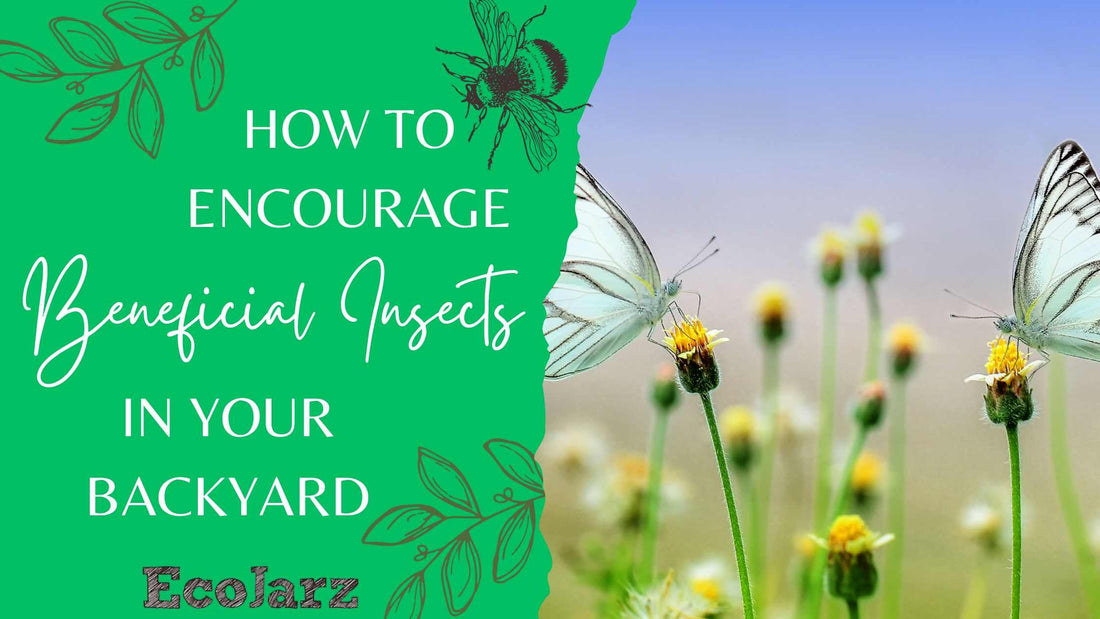Bugs may be ugly, and sometimes scary, but not all of them are bad. Bugs and insects are essential to a healthy ecosystem. They pollinate plants and provide food for birds and other wildlife. There are over 900,000 species of known insects in the world, and many scientists believe that there are still more to be discovered. Beneficial insects perform various important duties in the ecosystem and can fall into any of three categories:
Pollinators - pollinators are bugs like bees, moths, butterflies, they seek out the nectar of flowering plants and in the process spread pollen from plant to plant.
Predators - predators are insects that hunt and eat other insects, usually the harmful ones, such as ladybugs which feed on aphids.
Parasitizers - parasitizers are insects that don’t eat other insects as adults, but that lay eggs in other insects to provide food for their young when they hatch into the larval stage.
Due to changing climate and ecosystems, many bugs have gone extinct or have become endangered. Many modern practices today, can actually be harmful to bugs, and therefore have an impact on our ecosystem that we live in. There are some simple steps you can take to encourage beneficial bugs in your yard and keep the ecosystem thriving!
Pesticides harm more than they help.
The first and most important thing you can do is to stop using chemical pesticides. These commercial produced pesticides are marketed to kill the annoying harmful pests, like mosquitos, hornets, ants, termites, etc. But pesticides don’t actually discriminate between species of insects, so by trying to eliminate a few it is actually killing ANY, even the helpful ones. Not to mention it can be harmful to you, your pets, and loved ones! By far the best pest control is by encouraging natural predators; like birds and other insects that eat the so-called pests. To do this, you can create an environment in your yard that will be inviting for a variety of birds and insects.
Let your grass grow long.
Long grass is incredibly beneficial for wildlife. Patches of long grass encourage different plant species to grow, provide homes for insects to thrive and create feeding opportunities for birds. Let your grass grow long in between mowings or even leave a designated patch of long grass in an area of your yard. Weeds add to the diversity of plants and thus increase the variety of insects in the garden.
Choose the right plants.
Did you know, most plants have their own built in pest deterrents, when they’re healthy and planted in environments they thrive in? A plant grown in the wrong conditions will be stressed and more likely to succumb to pests or disease. Native plants will thrive and require less work to be healthy and therefore will contribute to a healthy ecosystem in your backyard.
You can use companion plants to either attract or deter insects. Planting aromatic herbs among your plants can attract a diverse bunch of pollinators and predator insects and often deters the more harmful insects that just want to snack. Companion plants can also add nutrients to the soil that the other surrounding plants may need.
Choosing a variety of plants will also help to ensure that there is always something blooming, from spring until autumn, which will also help beneficial insects to stick around!
Leave decaying matter.
Composting is not only a way of turning waste into nutritious soil, it's also a veritable buffet for the insects and worms doing the job. Compost needs moisture and air circulation to properly break down. And a healthy, active compost pile won’t smell rotten, but like good, clean soil. Just be sure it's protected from scavengers like birds, squirrels, raccoons, your dog, etc. or you’ll have compost scraps scattered all over your yard. Decaying matter is a great environment for certain beneficial bugs, like pillbugs. Pillbugs help to break down decaying matter and they remove metals from the soil. If you don't have a compost pile, you can at least leave patches of fallen leaves or branches in a corner of your yard to provide shelter and safety for these types of bugs. Native bees can also nest in dead limbs, branches and the hollows of the dried stems of native flowers.
Water is essential.
Just about any stand of water in your yard, from a tiny puddle to a pond, can be useful for a beneficial insect. Butterflies get valuable minerals and salts from slightly muddy water, and birds use water to bathe and remove parasites. You can help out at home by creating a simple watering station for insects and other wildlife. Fill a shallow basin with a mixture of gravel and small stones, sand and/or soil, you want to be sure that anything that climbs in can get out again. And keep it topped off with water in the hot weather!
A great resource for more information specific to your area, is to check out the local botanical gardens! They often provide free resources on plants and insects that are beneficial and native to your location.
Sources:
https://www.wildlifetrusts.org/actions/how-grow-wildlife-friendly-vegetable-garden
https://www.wildlifetrusts.org/actions/how-attract-butterflies-your-garden
https://www.wildlifetrusts.org/actions/how-grow-wild-patch-or-mini-meadow
https://www.wildlifetrusts.org/actions/how-provide-water-wildlife
https://www.wildlifetrusts.org/actions/best-plants-bees-and-pollinators
https://www.fs.usda.gov/Internet/FSE_DOCUMENTS/fseprd548063.pdf
https://www.treehugger.com/beneficial-insects-how-to-attract-good-bugs-to-your-4863469
https://www.almanac.com/beneficial-insects-garden
https://www.botanicgardens.org/education/water-wise-resources#pollinators
https://catalog.extension.oregonstate.edu/sites/catalog/files/project/pdf/pnw550.pdf
